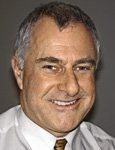- Case-Based Roundtable
- General Dermatology
- Eczema
- Chronic Hand Eczema
- Alopecia
- Aesthetics
- Vitiligo
- COVID-19
- Actinic Keratosis
- Precision Medicine and Biologics
- Rare Disease
- Wound Care
- Rosacea
- Psoriasis
- Psoriatic Arthritis
- Atopic Dermatitis
- Melasma
- NP and PA
- Skin Cancer
- Hidradenitis Suppurativa
- Drug Watch
- Pigmentary Disorders
- Acne
- Pediatric Dermatology
- Practice Management
- Prurigo Nodularis
- Buy-and-Bill
Article
Topical imiquimod for lentigo maligna requires careful follow-up
In a recent study, topical imiquimod 5 percent (Aldara, Graceway) showed efficacy against lentigo maligna (LM) (the in situ form of lentigo maligna melanoma), but the study's lead author cautions that long-term follow-up is crucial for patients treated with it.

Key Points

Prior case reports have suggested that imiquimod cream might be efficacious for LM, says Martin Haskett, M.D., consultant dermatologist with the Victorian Melanoma Service at Monash University's Alfred Hospital, Melbourne, Australia.
Imiquimod's known effects on basal cell carcinoma (BCC) provoked the trial, he says.
To test this hypothesis cautiously, Dr. Haskett says he and his colleagues began their research with patients who had LM because there would be little chance of metastases occurring within the 12-week treatment period. Additionally, the researchers designed a protocol that included standard treatment - surgical excision - after the 12 weeks of topical therapy, so that "patients' final outcomes were in no way going to be compromised," he says.
Next, investigators carried out a pilot trial in which five patients used imiquimod daily until an adequate inflammatory response occurred, after which physicians surgically excised the LM lesions, Dr. Haskett says. "We initially hoped we might be able to get results by simply creating short-term inflammation, but learned that it didn't produce clearance," he says.
Accordingly, investigators then extended the treatment period to 12 weeks and monitored patients throughout treatment.
Ultimately, they recruited 43 study patients with LM who applied the medication an average of five times weekly, skipping occasional days in deference to severe inflammatory responses, Dr. Haskett says.
Pathology process
Researchers also had to account for the fact that "the diagnosis of LM can be difficult for pathologists, so we used two independent pathologists to make sure that the disease we were treating was agreed upon by both pathologists before treatment. We also used two independent pathologists at the other end of the study, after specimens had been removed, so that we could also verify that there was pathology concordance about the outcome," Dr. Haskett says. For their final analysis, investigators included only 38 patients upon whom the two pathologists agreed regarding treatment results.
Dr. Haskett says a pivotal decision to maximize confidence in their results was to use full specimens of lesional areas rather than partial specimens for pathology assessment. "Unfortunately, a partial biopsy of the area that's been treated does not provide a good enough sample to really determine the treatment's efficacy," he says.
The study ran between 2005 and 2009, including follow-up, which ranged from more than four years to less than one year. Ultimately, "The medication was only effective in 53 percent of our patients. We don't know which patients it will work in, but it will only work in half of patients if they are randomly selected," Dr. Haskett says.
Patients generally tolerated the treatment well, he says. "There were certainly patients who experienced quite significant inflammation," but only one dropped out for this reason. "If patients are well-informed at the start, then they expect the inflammation and handle it well," he says.





